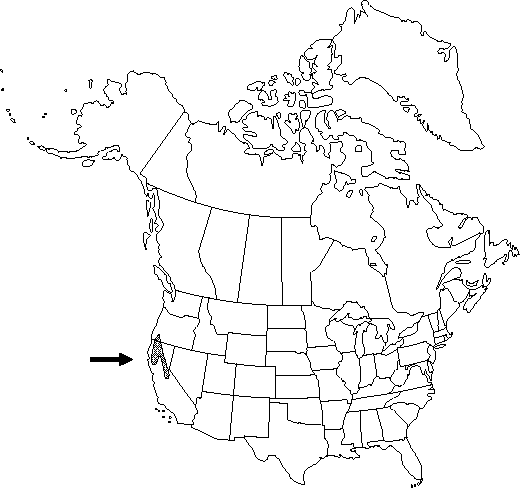Berberis pumila
Pittonia 2: 161-162. 1891.
Shrubs, evergreen, 0.1-0.4 m. Stems monomorphic, without short axillary shoots. Bark of 2d-year stems gray-brown or purplish, glabrous. Bud scales 3-6 mm, deciduous. Spines absent. Leaves 3-9-foliolate; petioles 0.5-4 cm. Leaflet blades thick and rigid; surfaces abaxially dull, papillose, adaxially dull, glaucous; terminal leaflet stalked, at least on most leaves, blade 4-8 × 2-5 cm, 1.3-1.9 times as long as wide; lateral leaflet blades ovate to oblong-ovate or elliptic, 1(-3)-veined from base, base obtuse, rarely truncate, margins plane or undulate, toothed, with 2-10 teeth 1-3 mm tipped with spines to 1.6-3 - 0.3-0.4(-0.5) mm, apex obtuse or rounded, rarely broadly acuminate. Inflorescences racemose, dense, 30-45-flowered, 2-4 cm; bracteoles membranous, apex rounded or obtuse, sometimes apiculate. Flowers: anther filaments with distal pair of recurved lateral teeth. Berries dark blue, glaucous, oblong-ovoid to spheric, 5-8 mm, juicy, solid. 2n = 28.
Phenology: Flowering winter–spring (Mar–May).
Habitat: Open woods and rocky areas
Elevation: 300-1200 m
Distribution

Calif., Oreg.
Discussion
Berberis pumila is resistant to infection by Puccinia graminis.
Selected References
None.